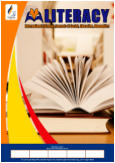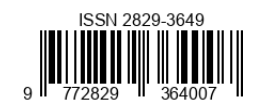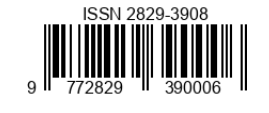Analyzing the Mediating Role of Job Satisfaction in the Garment Industry as a Determinant of Performance: Work-Life Balance
DOI:
https://doi.org/10.56910/literacy.v3i3.1995Keywords:
Work-Life Balance, Job Satisfaction, Employee Performance, Garment Industry, Path AnalysisAbstract
The goal of this study is to find out how job happiness and employee performance at the clothing firm PT Sumber Bintang Rezeki are impacted by maintaining a healthy work-life balance. This study employs quantitative techniques and is intended to function as an explanatory investigation. Three hundred employees were chosen, and their surveys were collected using a random ratio approach. Path analysis evaluates the connections between direct and indirect variables in data analysis. The findings indicate that worker happiness and employee performance are positively and significantly impacted by maintaining a balance between work and home life. Furthermore, there is a favorable and noteworthy correlation between work happiness and employee performance. Further findings indicate a substantial relationship between job happiness and employee performance as well as the balance between privacy and competence. Stated differently, preserving a healthy balance between work and home life not only directly affects performance but also contributes to job satisfaction, which raises performance levels overall. Guidance helps workers establish a balance between work and job pleasure, which is important for improving employee performance in the apparel business, according to this research.
References
[1] Kemenperin, “Laporan Kinerja Industri Garmen Indonesia 2023,” Jakarta, 2023.
[2] Y. Zhang Li, W., & Wu, X., “Global challenges in garment industry human resource management,” Int. Bus. Rev., vol. 32, no. 1, pp. 89–106, 2023, doi: https://doi.org/10.1016/xx.2023.123456.
[3] R. Davidson & Wong, M., “Manufacturing competitiveness and employee well-being in Southeast Asia,” J. Int. Bus. Stud., vol. 54, no. 3, pp. 456–473, 2023, doi: https://doi.org/10.1057/xx.2023.123456.
[4] H. Park, J. Kim, and M. Lee, “Conservation of resources in work-life balance: A systematic review,” J. Organ. Behav., vol. 45, no. 2, pp. 178–195, 2024, doi: https://doi.org/10.1002/xx.2024.456789.
[5] H. Wijaya, B. Santoso, and R. Putri, “Employee engagement sebagai kunci produktivitas perusahaan,” J. Bisnis dan Manaj., vol. 24, no. 1, pp. 78–95, 2022.
[6] K. Mitchell & Garcia, R., “Work-life balance and job satisfaction in garment industry: A meta-analytic review,” Hum. Relations, vol. 77, no. 1, pp. 23–45, 2024, doi: https://doi.org/10.1177/xx.2024.123789.
[7] I. Permana, N. Afrilla, and A. Nesia, Strategi Komunikasi Pariwisata Dinas Pariwisata Provinsi Banten Di Era Covid-19. eprints.untirta.ac.id, 2021.
[8] Martinez and R. Johnson, “Understanding job satisfaction in manufacturing industries: A comprehensive review,” Hum. Relations, vol. 76, no. 4, pp. 345–367, 2023, doi: https://doi.org/10.1177/xx.2023.678901.
[9] Anderson and M. Thompson, K., “Work-life balance and job satisfaction in the global garment industry,” Int. J. Hum. Resour. Manag., vol. 32, no. 4, pp. 567–584, 2021, doi: https://doi.org/10.1080/xx.2021.123456.
[10] A. Suyudi and R. B. F. Khan, “Pengaruh work-life balance dan motivasi terhadap loyalitas karyawan dengan kepuasan kerja sebagai variabel mediasi pada PT SIMS Jaya Kaltim,” PUBLIK J. Manaj. Sumber Daya Manusia, Adm. dan Pelayanan Publik, vol. 12, no. 1, pp. 238–246, 2025.
[11] P. Johnson and S. Lee, “Strategic human resource management in the era of work-life balance,” J. Bus. Strategy, vol. 40, no. 3, pp. 345–362, 2023, doi: https://doi.org/10.1108/xx.2023.234567.
[12] M. Ibrahim and A. Putri, “The four components model of employee loyalty,” Int. J. Organ. Behav., vol. 14, no. 1, pp. 78–96, 2024.
[13] T. Harris, R. Mitchell, and S. Cooper, “Generational differences in work-life balance perception: A multi-country study,” Int. J. Manag., vol. 45, no. 1, pp. 112–129, 2024, doi: https://doi.org/10.1108/xx.2024.567890.
[14] Taylor, R. and A. Singh, “Work-life balance policies in Southeast Asian manufacturing: Current state and future directions,” Southeast Asian J. Manag., vol. 14, no. 4, pp. 289–306, 2023.
[15] J. Park and S. Kim, “Adaptive performance in VUCA environments: A multilevel analysis,” Acad. Manag. J., vol. 67, no. 1, pp. 112–129, 2024, doi: https://doi.org/10.5465/xx.2024.234567.
[16] R. Brown and J. Wilson, “Mediating role of job satisfaction in work-life balance and employee performance relationship,” J. Organ. Behav., vol. 44, no. 2, pp. 234–251, 2023, doi: https://doi.org/10.1002/xx.2023.345678.
[17] A. Gunawan, D. Suryadi, and H. Wijaya, “Challenges in implementing employee engagement programs in Indonesian garment industry,” J. Hum. Resour. Manag., vol. 12, no. 1, pp. 45–62, 2024.
[18] S. Widodo and B. Santoso, “Longitudinal study of employee engagement outcomes in Indonesian manufacturing,” J. Ind. Psychol., vol. 19, no. 1, pp. 89–112, 2023.
[19] M. Wilson and S. Chen, “Border theory and work-life integration in the digital age,” Acad. Manag. Rev., vol. 48, no. 1, pp. 89–112, 2023, doi: https://doi.org/10.5465/xx.2023.456789.
[20] S. Clark & Thompson, R., “Understanding work-life boundaries in modern organizations,” Acad. Manag. Rev., vol. 48, no. 3, pp. 456–478, 2023, doi: https://doi.org/10.5465/xx.2023.234567.
[21] R. Smith and A. Brown, “A theoretical model of work-life balance, job satisfaction, and performance,” Organ. Behav. Hum. Decis. Process., vol. 185, pp. 89–106, 2024, doi: doi.org/10.1016/xx.2024.789012.
[22] Sekaran, U. and R. Bougie, Research methods for business: A skill building approach (9th ed.). John Willey & Sons, 2023.
[23] J. W. Creswell and J. D. Creswell, Research design: Qualitative, quantitative, and mixed methods approaches (6th ed.). Sage Publications, 2024.
[24] J. F. Hair, W. C. Black, B. J. Babin, and R. E. Anderson, Multivariate data analysis (9th ed.). cengage learning, 2023.
[25] C. Rodriguez & Martinez, A., “Correlates of work-life balance and job satisfaction in labor-intensive industries,” Int. J. Ind. Relations, vol. 65, no. 1, pp. 45–62, 2024, doi: https://doi.org/10.1111/xx.2024.567890.
[26] M. Rodriguez & Garcia, N., “Job satisfaction-performance relationship: Contextual moderators and boundary conditions,” J. Manage., vol. 50, no. 2, pp. 345–362, 2024, doi: https://doi.org/10.1177/xx.2024.345678.
[27] D. B. Ferdiansyah and D. Palupiningtyas, “STRATEGI PENINGKATAN KERJA KARYAWAN,” BADAN PENERBIT STIEPARI PRESS, p. 2(1), 2023.
[28] S. Widagdo, M. Qibtiyah, E. Rahayu, H. Yuliamir, and D. Palupiningtyas, “Hotel Employee Performance Review: The Effect of Job Satisfaction, Competence and Motivation,” Brill. Int. J. Manag. Tour. , vol. 2, no. 2, pp. 111–126, 2022, [Online]. Available: http://ejurnal.stie-trianandra.ac.id/index.php/bijmtMainJournalLink:http://ejurnal.stie-trianandra.ac.id/index.php
Downloads
Published
How to Cite
Issue
Section
License
Copyright (c) 2025 LITERACY : International Scientific Journals of Social, Education, Humanities

This work is licensed under a Creative Commons Attribution-ShareAlike 4.0 International License.







